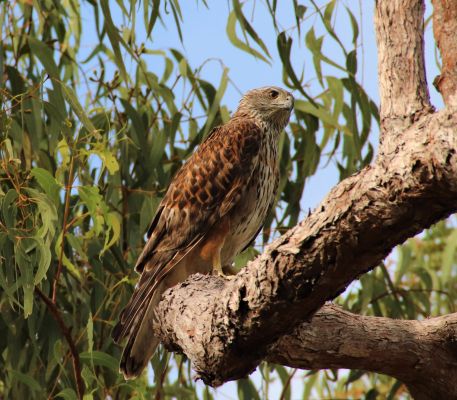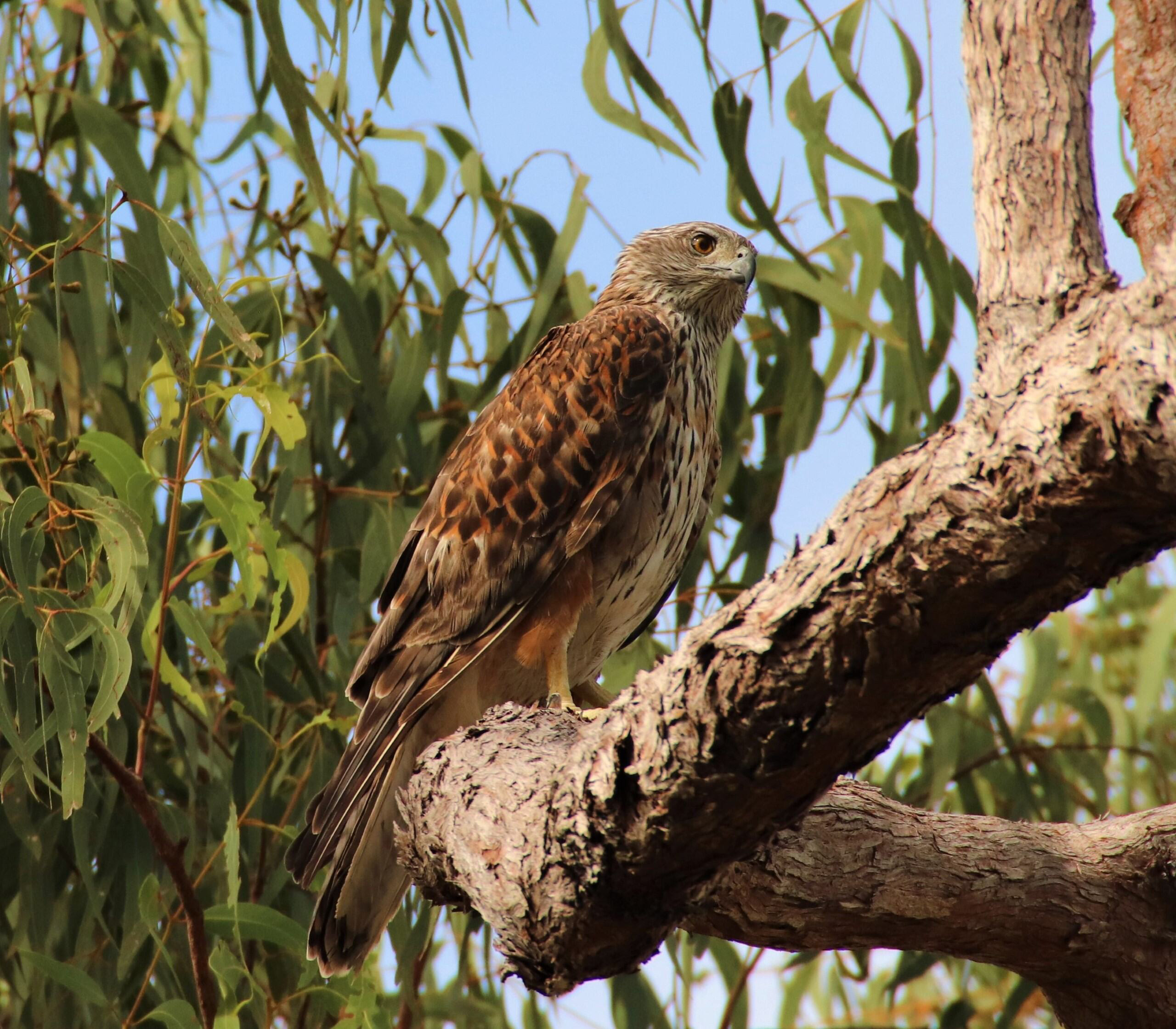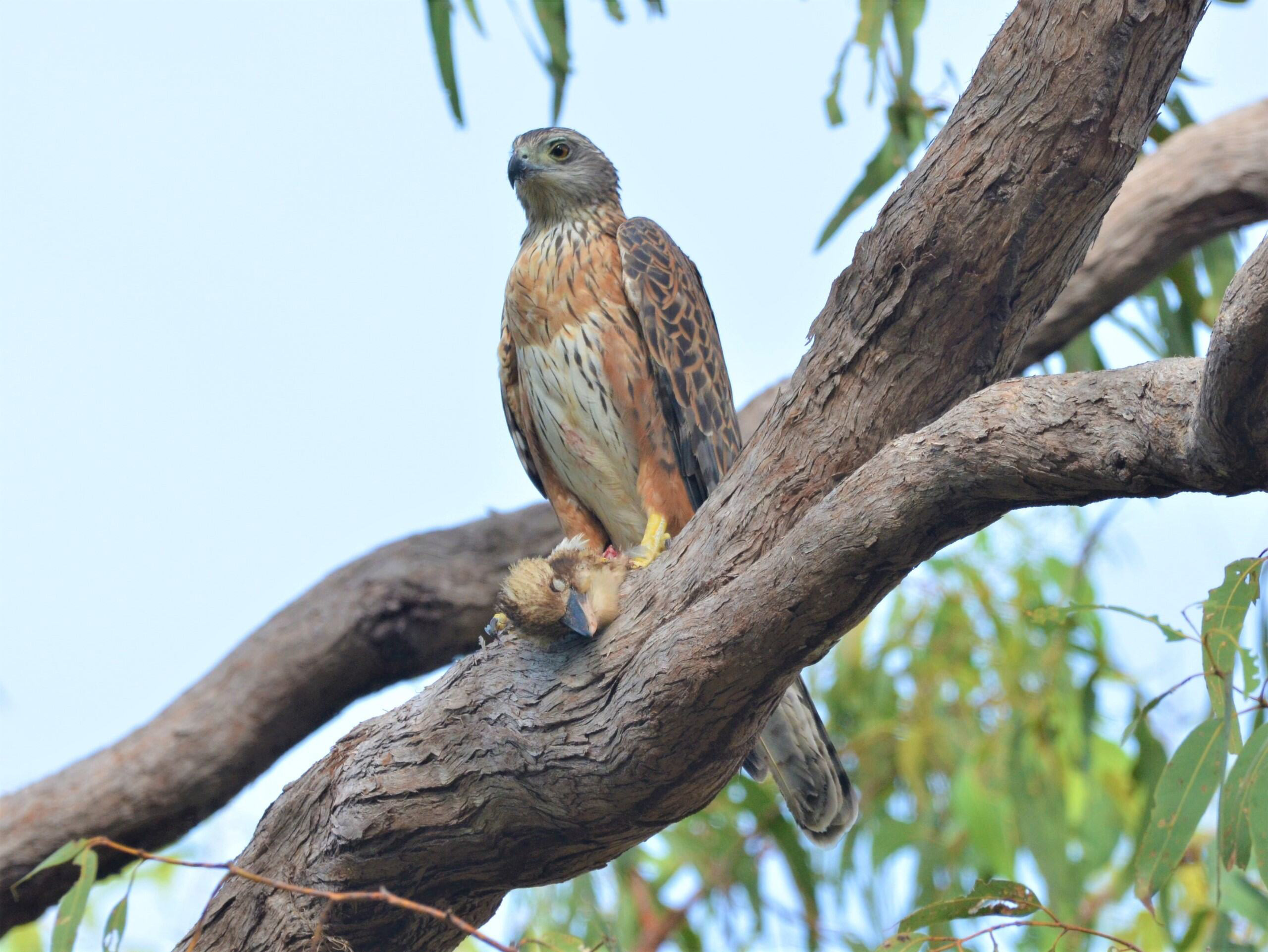Red goshawk
Fast facts
Common name: Red goshawk
Scientific name: Erythrotriorchis radiatus
Family: Accipitridae (eagles, kites, goshawks)
Status: Endangered
Habitat: open woodlands and forests, riparian habitats along or near watercourses or wetlands

Species overview
The red goshawk is a large, swift and powerful bird of prey but more research is needed to understand how we can help protect it.
We are still gathering knowledge about the red goshawk’s cultural significance, ecology and behaviour.
The red goshawk occurs across much of northern Australia including Cape York in Queensland, where there are large areas of intact woodland near watercourses and an abundance of prey.
While habitat loss and degradation are likely responsible for this decline, more research is needed to confirm why the species has diminished over its historic range.
Behaviour and ecology
The red goshawk is an apex predator, with rainbow lorikeets, sulphur-crested cockatoos, and blue-winged kookaburras as its main prey.
They usually hunt from concealed perches but also on the wing, flying close above or through the forest canopy in search of prey.
Their flight is fast, with strong wing beats interspersed with glides. The red goshawk also soars, showing a distinctive underwing pattern of rust-red wing-lining contrasting with grey, heavily barred flight feathers.
Adult goshawks appear to occupy vast territories, with home ranges covering hundreds of square kilometres. They often nest in the tallest trees in proximity to permanent water sources.
Red goshawks lay 1–2 dull, bluish-white eggs in a large nest of dead sticks lined with twigs and leaves. The female incubates the eggs for up to 40 days and feeds the young, although the male provides most of the food. The young stay with their parents for at least 70–80 days after they leave the nest before dispersing to find their own territory.

Characteristics
The red goshawk has:
- a length of 45–58 cm
- a wingspan of 110–135 cm
- reddish-brown colouring above
- two-tone feather colouring with reddish-brown body coverts
- grey wing and tail feathers with dark bands
- a pale head with black streaks running down the chest (more prominent in females)
- has long and broad wings, with deeply 'fingered' wingtips
- massive yellow legs and talons
- a call like a series of high-pitched, strident yelps, which is harsher for the female.
Threats
- Habitat loss and degradation
- Inappropriate fire regimes.
What’s being done?
- For approximately 9 years, our work has focused on understanding more about this rare species through research and monitoring.
- In collaboration, we have used GPS to track several red goshawks in far northern Queensland. This high-resolution tracking data provides previously unobtainable information about the raptor’s movements and range. This research helps us identify the red goshawk’s critical habitat, allowing more effective conservation management.
Who is helping?
- The University of Queensland (UQ) researchers, including PhD candidate Chris MacColl, analysed 40 years of red goshawk sightings by citizen scientists to identify population trends. They continue to survey red goshawks.
- Australian Wildlife Conservancy (AWC) has helped to fund red goshawk research.
- Rio Tinto Weipa has helped to fund red goshawk research.
How you can help
- Report any sightings of the red goshawk via citizen science apps, such as eBird or Birdata.
- Make a donation to support Queensland threatened species protection and science and research-based initiatives.
- Find out more about how you can help support threatened species efforts.

